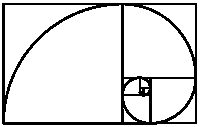Math in the Middle Institute Partnership
Date of this Version
7-2008
Abstract
My research project was to investigate key processes of mathematical thinking in my seventh grade mathematics classroom. Its purpose was to see whether I could affect the quality of student mathematical thinking and solution writing by teaching students five key processes of mathematical thinking I had identified, and by providing students with opportunities to evaluate sample student solutions using traits describing these processes. Every two weeks, students attempted solutions for a given problem and rated their work according to the specific characteristics identified as key to mathematical thinking. Every other week I gave the class sample student work at varied proficiency levels to rate according to a rubric and they discussed or defended their decisions. I found that student reasoning, whether written or oral, did improve over time as we emphasized these processes, although the change was slow and in small steps. Student engagement was also affected by the time we spent working in large or small group activities. The change, however, did not occur without an investment of substantial effort and time on my part and the students’. Learning about specific processes to emulate, model and then use to evaluate another’s work is an in-depth task that does not happen quickly or easily.



Comments
Math in the Middle Institute Partnership, Action Research Project Report, in partial fulfillment of the MA Degree. Department of Teaching, Learning, and Teacher Education. University of Nebraska-Lincoln. July 2008.